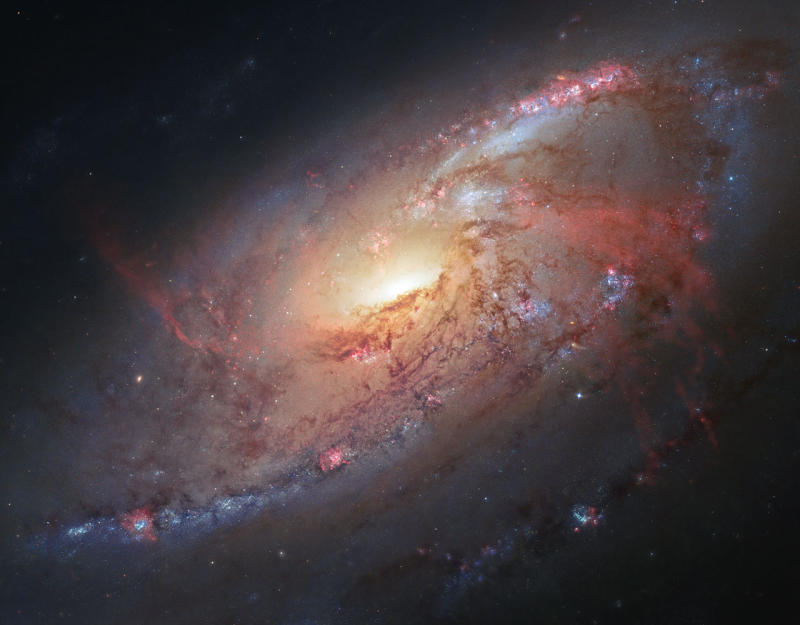Science News
M106 and Its Hungry Black Hole
March 14, 2013

By Elise Ricard
We know that our galaxy, the Milky Way, with its hundreds of billions of stars (and potentially equal or greater number planets) is only one of perhaps 100 billion galaxies within our observable Universe.
And with that many galaxies to observe, we find plenty of surprises.
A mere 20 million light years away lies the plainly named M106, or Messier 106, a spiral galaxy like the Milky Way. Though discovered in 1781, it was posthumously added to Charles Messier’s catalog nearly two centuries later—in 1947, 23 years after astronomers had accepted the concept of galaxies beyond our own. The massive nearby galaxy remains an object of interest today.
Recently, award-winning amateur astrophotographer Robert Gendler combined his own work with amateur astronomer Jay GaBany’s, along with data collected from the Hubble Space Telescope, to produce a stunning mosaic of one of best images yet of M106, revealing a secret of our cosmic neighbor.
Like the Milky Way, M106 has bright arms that form its spiral and reach out from the supermassive black hole in its center. While most spiral galaxies show evidence for central black holes, M106 harbors a very active one at its core that is devouring surrounding matter at an alarming rate. By comparison, the black hole at the center of the Milky Way pulls in wisps of gas only occasionally.
The new amalgamated image shows multiple arms on two different planes rather than two arms on one plane. M106 has two arms filled with the glowing blue of newly forming stars on one plane, and starless, gas-composed arms—viewed in X-ray and radio waves—on the other plane. As matter falls into the black hole, it forms a huge flat disk called an accretion disk and spews high-speed jets of particles. These collide with the relatively stationary gas of the other arms and create a shock wave that heats the material to over one million degrees. This energy causes the anomalous arms to glow red, the color of excited hydrogen.
While we know of many galaxies containing super massive black holes, M106 lends itself to study for numerous reasons. It is in a near perfect position for astronomers on Earth to view the perpendicular axis of the X-ray particles. And it’s also very close by—relatively speaking, of course!
In a time when we are only beginning to understand the composition and mysteries of our own galactic home, observations and images such as those of M106 provide rare opportunities for astronomers to study the workings and structures of other, more distant galaxies. And the more we learn of other galaxies, the more we can understand how the Milky Way compares.
Perhaps the most exciting aspect of this discovery is that the contribution comes from amateur astronomers, helping to highlight the immense value of dedicated volunteers in sifting through the massive quantities of data recorded by telescopes such as Hubble.
Elise Ricard holds a master’s degree in museum education and is a presenter at Morrison Planetarium.
Image: NASA, ESA, the Hubble Heritage Team (STScI/AURA), and R. Gendler (for the Hubble Heritage Team). Acknowledgment: J. GaBany, A van der Hoeven)